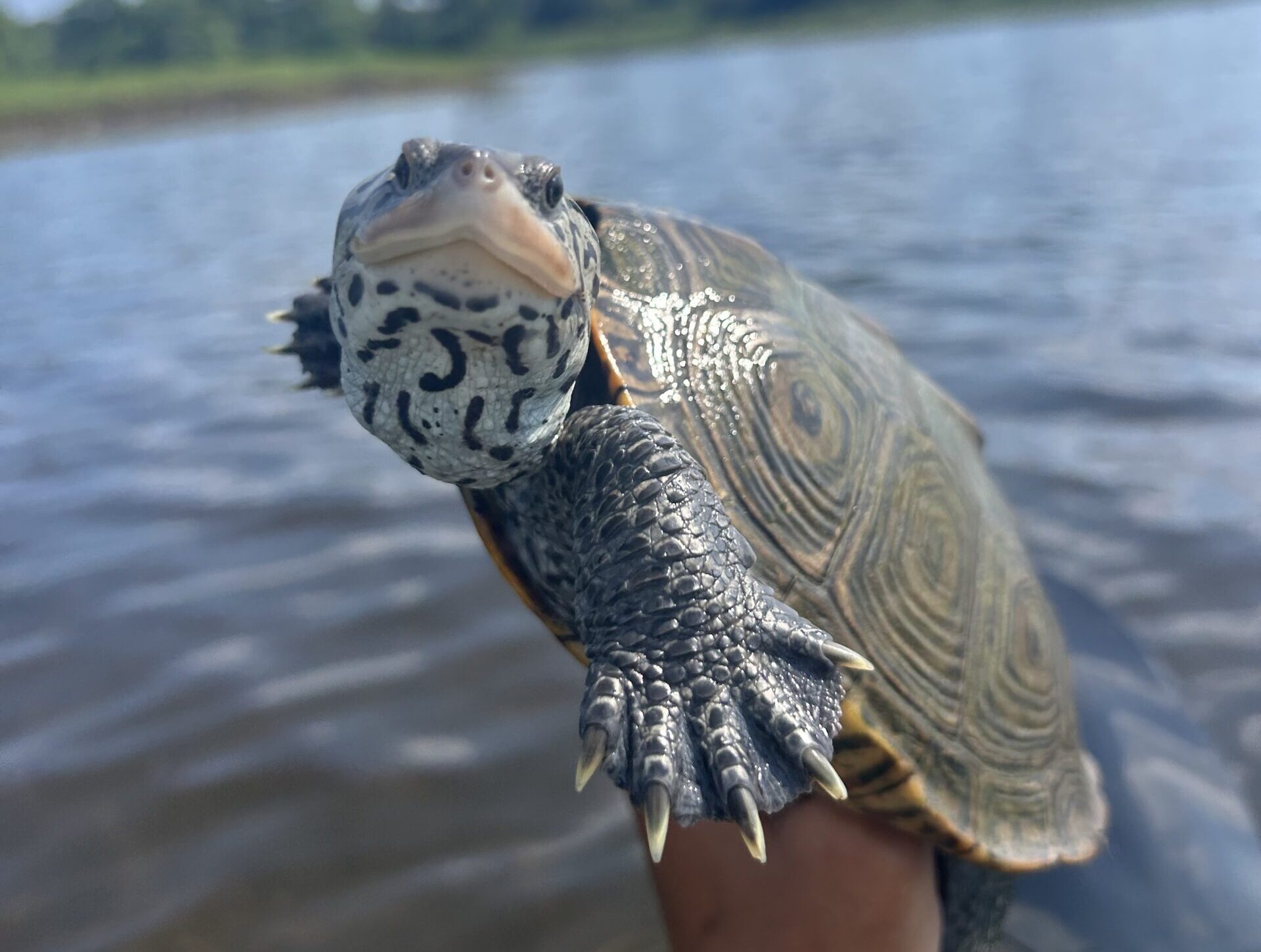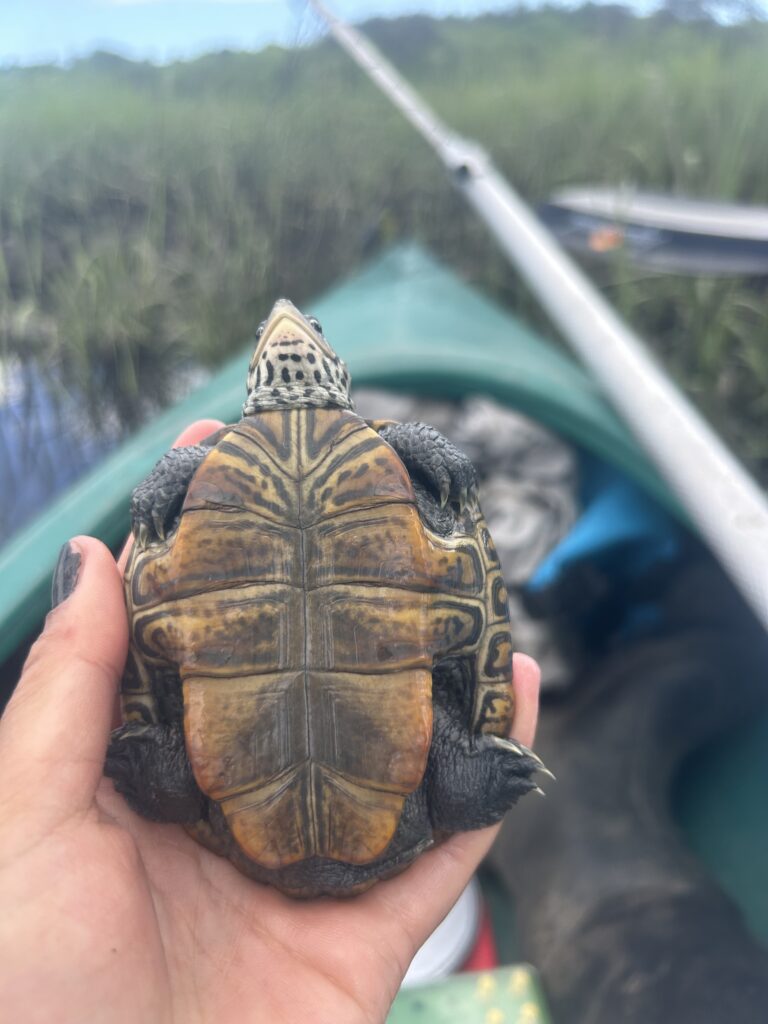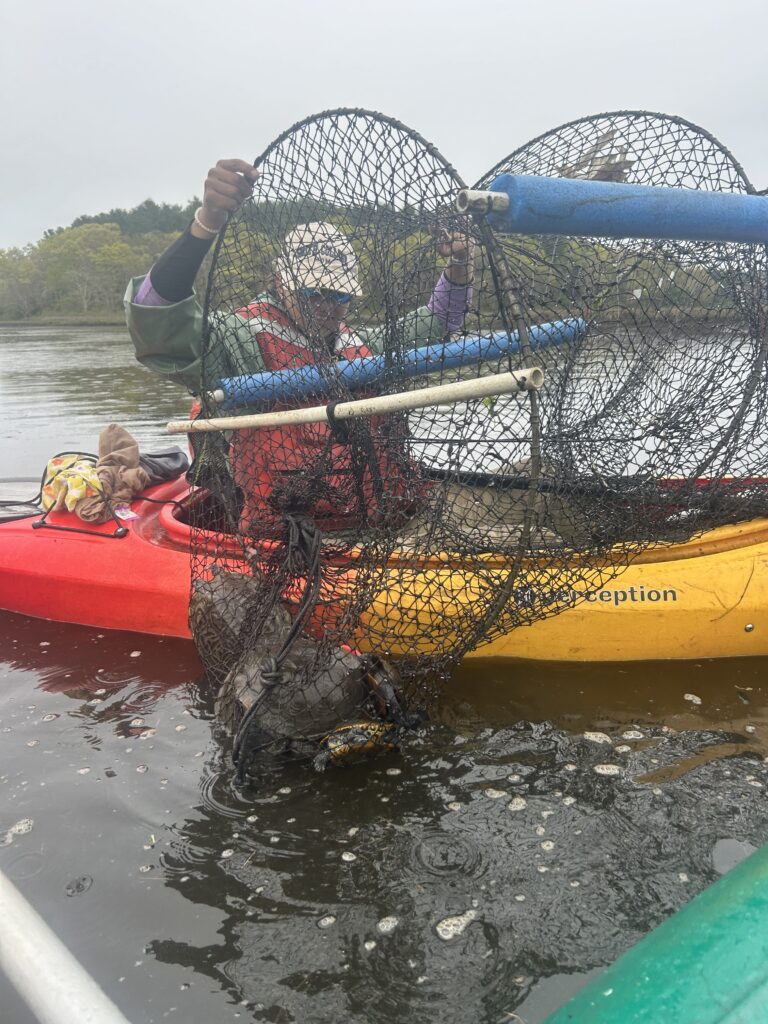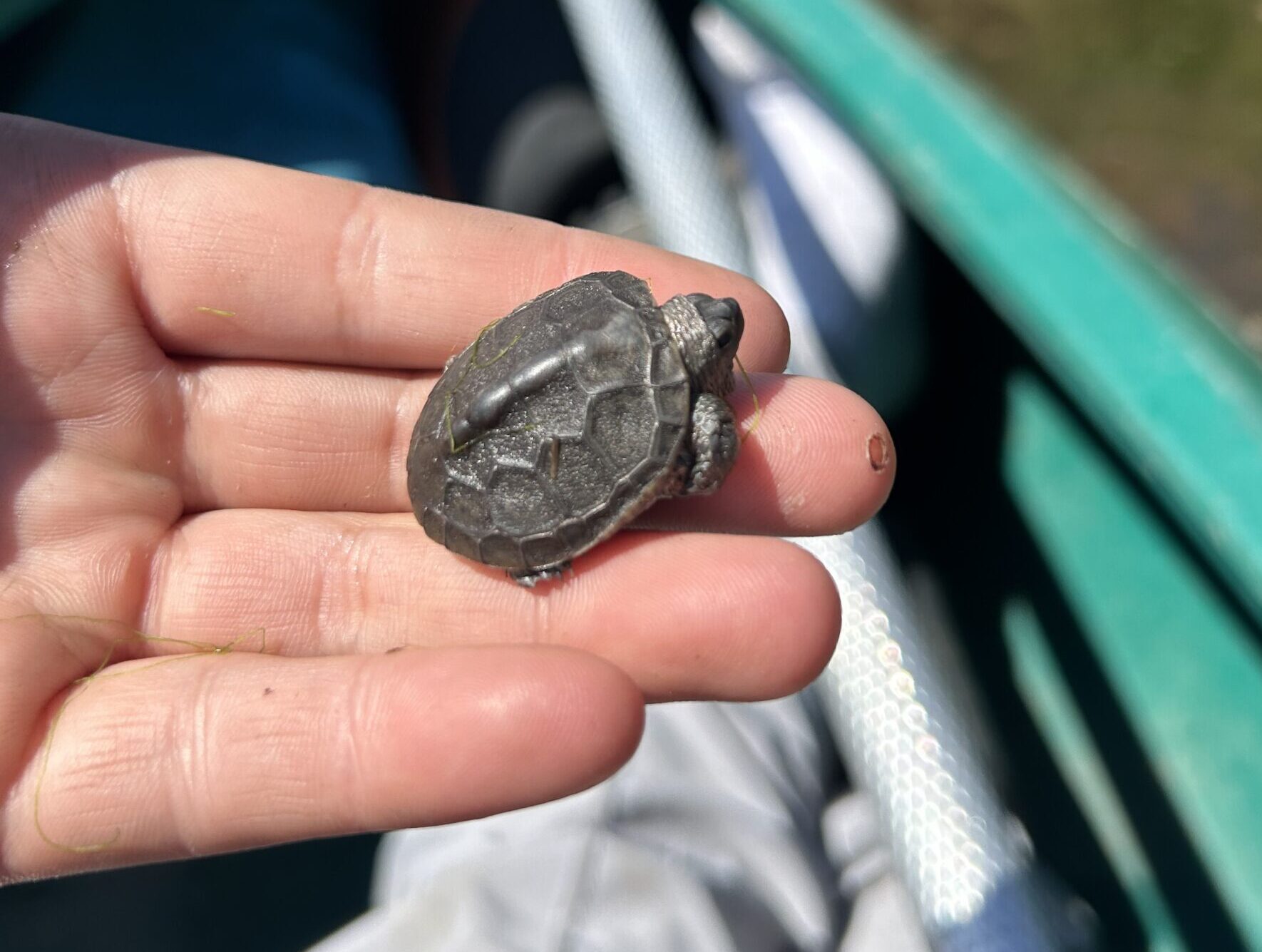
The Northern Diamondback terrapin (Malaclemys terrapin) is a species of brackish turtle that is native to estuaries and coastal marshes in the southeastern United States. They are active during early spring to summer and hibernate in the colder months. Their population is threatened mainly due to changing habitat but they are also vulnerable to predation and climate change effects. Throughout the 2024 spring and summer season, our Field Conservation Department of Zoo New England and MassWildlife were able to collaborate on a project studying their population and habitat throughout Buzzards Bay. The focus has been on surveying their population by three primary methods which include hand captures, visual surveys, and trapping.

Hand captures can be effective for focusing on working up terrapins but can sometimes be tricky. Hand captures by net are most effective when the sun is out and it is closer to low tide. Earlier in the season, their aggregation spots were more predictable and we would focus on targeting those areas for hand captures. When caught, we take basic measurements, photos, record any injuries or abnormalities, weight, identify their sex, notch their plastron, and PIT-Tag them. The PIT-Tag goes in their left hind leg and when scanned, it will give a unique series of numbers and letters which helps to identify each individual. We also deployed acoustic receivers spread throughout the Wareham River and attached transmitters on 30 females. Each time they pass within a certain distance to the receiver, it will identify which female passed by and when. This will give us a bigger understanding of their movements and how far they are traveling especially for nesting. Part of the data we are analyzing is Mark-Recapture to get an idea of how far each individual is traveling and their habitat size. In the bigger picture, this data will be helpful to understand how coastal changes are affecting their movements.
Visual surveys involve recording the number of terrapins seen in the water or basking on different rock and vegetation formations. Shorelines and full channels are surveyed by kayak. We have a total of 35 sites we have surveyed multiple times spanning from Westport, MA to Onset, MA. We primarily focus on low tide surveys as we hypothesize they are most active during rising and falling tides. During mating season, they were regularly in low tidal spots in big aggregations. As the season has progressed, we have noticed they are more spread out throughout the sites. One of our biggest populations of terrapins to date is the Wareham River. We commonly see over 50 or more terrapins during the survey and have yielded the highest amount during trapping runs.

For trapping, we utilize large and small hoop nets with sardines as bait. We focused our trapping at three different sites and ran them three times per site. Each trap run is 5 days where we set them up on a Monday and pull them on Friday. The Wareham River behind the Wareham High School has been our most successful trap site. We have trapped around 320 terrapins with about 20 percent being previously PIT-tagged and the other 80 percent being initial captures. One of our analyses focused on the success rate between large and small hoop nets. A few trap runs, we randomized where the large and small traps were placed, and then other times their location was chosen. For the Wareham River site specifically, the large hoop nets captured 10 percent more than the small hoop nets. We noticed different factors besides the size of the traps that could influence a terrapin to go in it. For example, during mating season, we observed on many occasions if there was a female in the trap, there were a greater number of males in the trap as well. Also, occasionally we get blue crabs in our traps which could be attracting bigger females. Many factors could influence the success of the traps that we are still trying to understand and analyze.

Overall, the season has been nothing short of amazing and we have accomplished a lot! Having the opportunity to work with a species that is native to the region is awesome and it’s a bonus to see other wildlife too. We have also been able to remove derelict hard-sided crab traps that are at risk for attracting terrapins and have been able to collaborate with other people involved in conservation. With sites being surveyed as many as five times each, we are starting to get an idea of individual counts and what habitat features might influence the presence and success of a terrapin population. With these efforts, we hope our methods are carried out in upcoming seasons and we can continue to analyze their threatened population.
